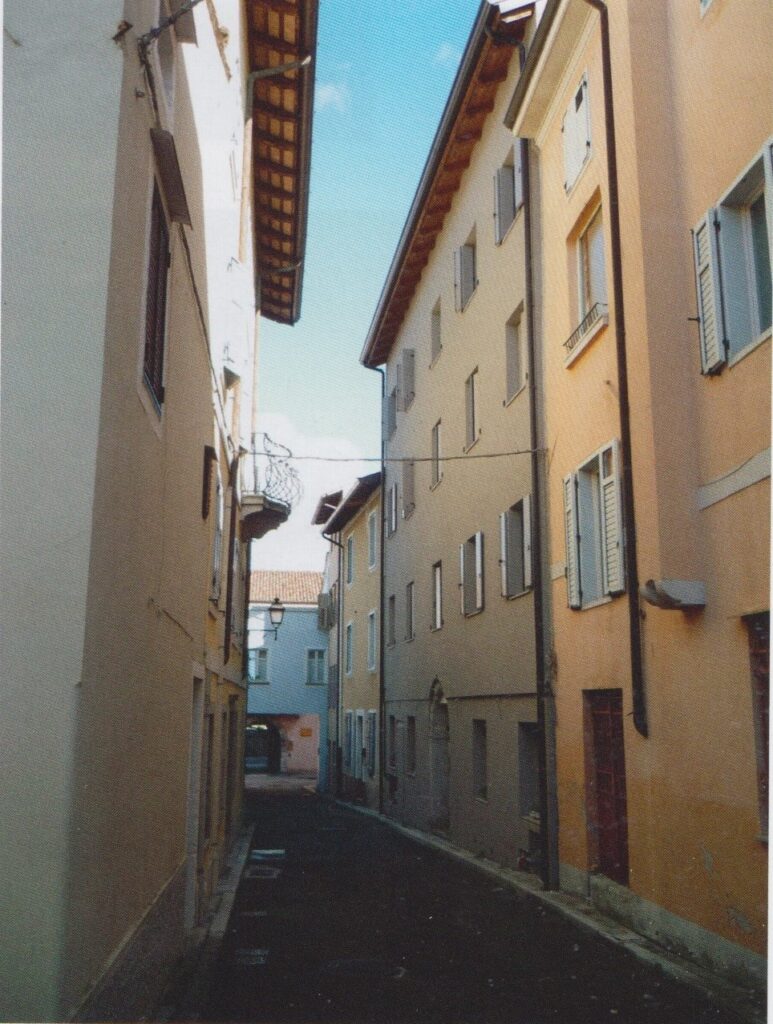Learn More

The first documented Jewish presence in Gradisca is in 1585, when the Morpurgos (from Maribor or Marburg) arrived after the expulsion of Jews from Vienna. In 1624, for services rendered to the Habsburgs by Moises and Iacob Marburger during the war, they were granted the title of Hofjuden (Jews of the Court, only answerable to the Imperial authorities), obtaining various rights and freedoms, including religious tolerance, freedom of actions, residence and trade.
In 1753 the Jewish Community of Gradisca was legally created, extending to include the areas of Monfalcone, Cormons and Terzo. For more than a century the Gradiscan Community was self-sufficient and – though small – it was constantly growing, numbering 135 people in 1857.
Up until the 1800s, the majority of the Jewish Community was Ashkenazi: Jews originating from Austria, Slovenia and Central Europe. Following several marriages and immigrant arrivals, some Sephardic Jews and Italian Jews from the Veneto area joined the Community.
The Jews of Gradisca specialised in a number of fields: moneylending, trade, the processing of wool, silk, canvas and leather. After the Emancipation they began to carry out freelance positions.
From the early eighteenth century, the Jewish Community frequently received the order to move to a defined area, away from Christians, though they managed to delay this thanks to the privilege of the Morpurgos and to a peaceful integration into Gradiscan society. In 1769, however, the ghetto was established in the area around the current Via Petrarca, with barred windows facing the street, two large doors to enter and a Synagogue. Severely damaged by a fire during the Great War, nowadays only an archway survives, which is held in the city’s Museum. At the time of the ghetto there were 63 members of the Jewish Community.
The Jews of Gradisca were obliged to pay a series of taxes: as “war subsidies”, for the construction of the ghetto and for the houses within; for marriages; and to guarantee tolerance towards them. Those who had been granted the title Hofjuden were exempt from paying these taxes.
With the return to Venice of 1777, many Jews from western Friuli decided to move to the County of Gradisca. The ghetto quickly became overcrowded. With the Edict of Toleration of 1781-85 the ghetto was abolished and in 1872 the street of the ghetto was renamed “Street of the Israelite Temple”.
In 1893, with less that 30 members remaining, the Jewish Community of Gradisca was amalgamated with that of Gorizia. Since the early nineteenth century there has been no local rabbi, and members of the community must always rely on that of Gorizia.
SOURCES:
Miriam Davide and Pietro Ioly Zorattini (eds), Gli ebrei nella storia del Friuli Venezia Giulia. Una vicenda di lunga durata, Giuntina, Florence 2016
Maddalena Del Bianco Cotrozzi, Gli ebrei di Gradisca ed i loro privilegi, in Ioly Zorattini Pier Cesare (ed.), Gli ebrei a Gorizia e a Trieste tra “ancien régime” ed emancipazione, Del Bianco, Udine 1984, pp. 155-163
Maddalena Del Bianco Cotrozzi, Il trasferimento dei rotoli della Torah alla nuova sinagoga di Gradisca nel 1769, in “Memorie Storiche Forogiuliesi”, 61 (1981), pp. 99-113
Maddalena Del Bianco Cotrozzi, La Comunità ebraica di Gradisca d’Isonzo, Del Bianco, Udine 1983
Maddalena Del Bianco Cotrozzi, Le famiglie ebraiche delle Contee di Gorizia e Gradisca in età moderna e contemporanea, in Miriam Davide and Pietro Ioly Zorattini (eds), Gli ebrei nella storia del Friuli Venezia Giulia. Una vicenda di lunga durata, Giuntina, Florence 2016, pp. 255-272
Edgardo Morpurgo, La famiglia Morpurgo di Gradisca sull’Isonzo, Società Cooperativa Tipografica, Padua 1909
Nikolaus Vielmetti, Elia Morpurgo di Gradisca, protagonista dell’Illuminismo ebraico, in Pier Cesare Ioly Zorattini (ed.), Gli ebrei a Gorizia e a Trieste tra “ancien régime” ed emancipazione, Del Bianco, Udine 1984, pp. 41-46
Translation from Italian to English by Bethany Gaunt
Project by
Jewish Community of Trieste and Ca’ Foscari University Venezia
Info
visit@triestebraica.it
